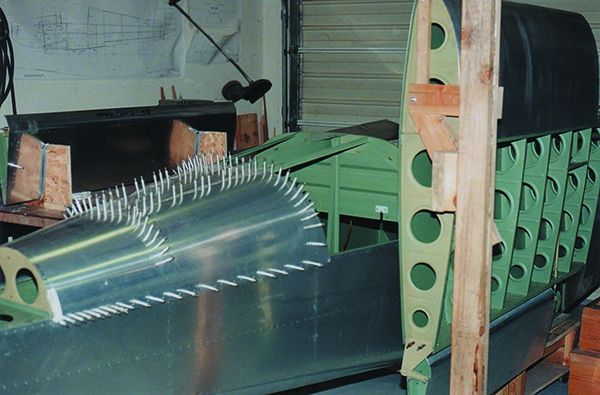The sale of a homebuilt/experimental category amateur-built aircraft—either completed or under construction—adds a few variables beyond the change of ownership of a factory-built machine. The buyer may not have experience flying aircraft that don’t meet FAA requirements for such things as stability and control and may not have realistic expectations about his/her ability to fly it.
The seller may be the builder and/or the primary mechanic for the airplane and is rightfully concerned about being sued if the buyer rolls it up into a ball.
If you are considering buying or selling a homebuilt, my recommendation is to first spend some quality time on the Experimental Aircraft Association’s (EAA) website (www.eaa.org). There is a great deal of information on the subject. I also recommend that you contact an attorney who has experience with the sale of experimental airplanes.
Space limitations prevent a full exposition of homebuilt sale pitfalls, so this will be an outline of matters to consider—above and beyond the material in the main article.
As a prospective homebuilt buyer, it is important to understand that aircraft certificated under FAR 21.191, experimental amateur-built, must have been constructed with the sole intent being education and recreation for the builder, and the builder must have constructed at least 51 percent of the airframe.
With that background, starting with buying a partially completed kit, a prospective buyer should answer the following questions:
The full cost of completing the construction—can I afford it?
Do I have the skills to finish building the airplane?
Do I have the space and facilities to finish building the airplane?
What is my confidence level in the work that has been completed thus far?
What is my confidence level in the instructions and the kit manufacturer’s support for the remaining construction?
Do I have the skills to safely fly the airplane when it’s done?
Can I make the right decision regarding who does the initial test flying of the airplane?
A prospective buyer of a homebuilt—especially one under construction—also needs to make sure that the seller owns it and has the authority to sell it. That requires that the seller provide evidence that is satisfactory to the buyer that only the seller has an ownership interest in the airplane. That might include the builder’s logbook, receipts for components/kits purchased and photographs of construction progress.
As with a factory-built aircraft, a prepurchase exam of a homebuilt is essential, in my opinion. The quality of construction of homebuilts I’ve looked at has ranged from Oshkosh winners to I wouldn’t stand under the wing for fear it would fall on me.
The exam should be conducted by someone who knows the type of homebuilt. This is where early involvement with a type club pays dividends as often club members can point you at the right person to do the exam who lives in the area of the aircraft.
A purchase agreement can benefit both parties to a homebuilt sale. In addition to what is included for a factory-built aircraft, this agreement should include acknowledgement by the buyer that the airplane is a homebuilt aircraft. If applicable, it should state that the seller disclaims the accuracy of any maintenance records other than those made during the time of ownership of the seller.
I also suggest an agreement by the purchaser to defend and indemnify the seller for losses occurring out of operations of the aircraft after the sale. That also means that the purchase agreement should set forth what state’s laws are to be used to interpret the agreement. Again aircraft sales are state law matters—only the registration is federal.
One of the greatest worries on the part of the seller of a homebuilt is being sued as the builder following a crash after the sale. The good news is that EAA reports there have been very few such lawsuits. Nevertheless, the seller should act to protect against such suits.
In addition to an indemnity agreement in the purchase agreement, the seller may have the buyer and spouse sign a liability waiver and release of personal injury drawn up by an aviation attorney. State laws vary on the effectiveness of waivers; nevertheless, having one can’t hurt and it may help.
The seller may be able to get insurance to protect her/him for some time after the sale. The insurance market is evolving, so inquire to see if it is available. It may also be possible for the buyer to name the seller as an additional insured on the buyer’s aircraft policy.
Homebuilts have provided years of pleasure for thousands of pilots. Part of that is because pilots have taken action to protect themselves when buying or selling one.





